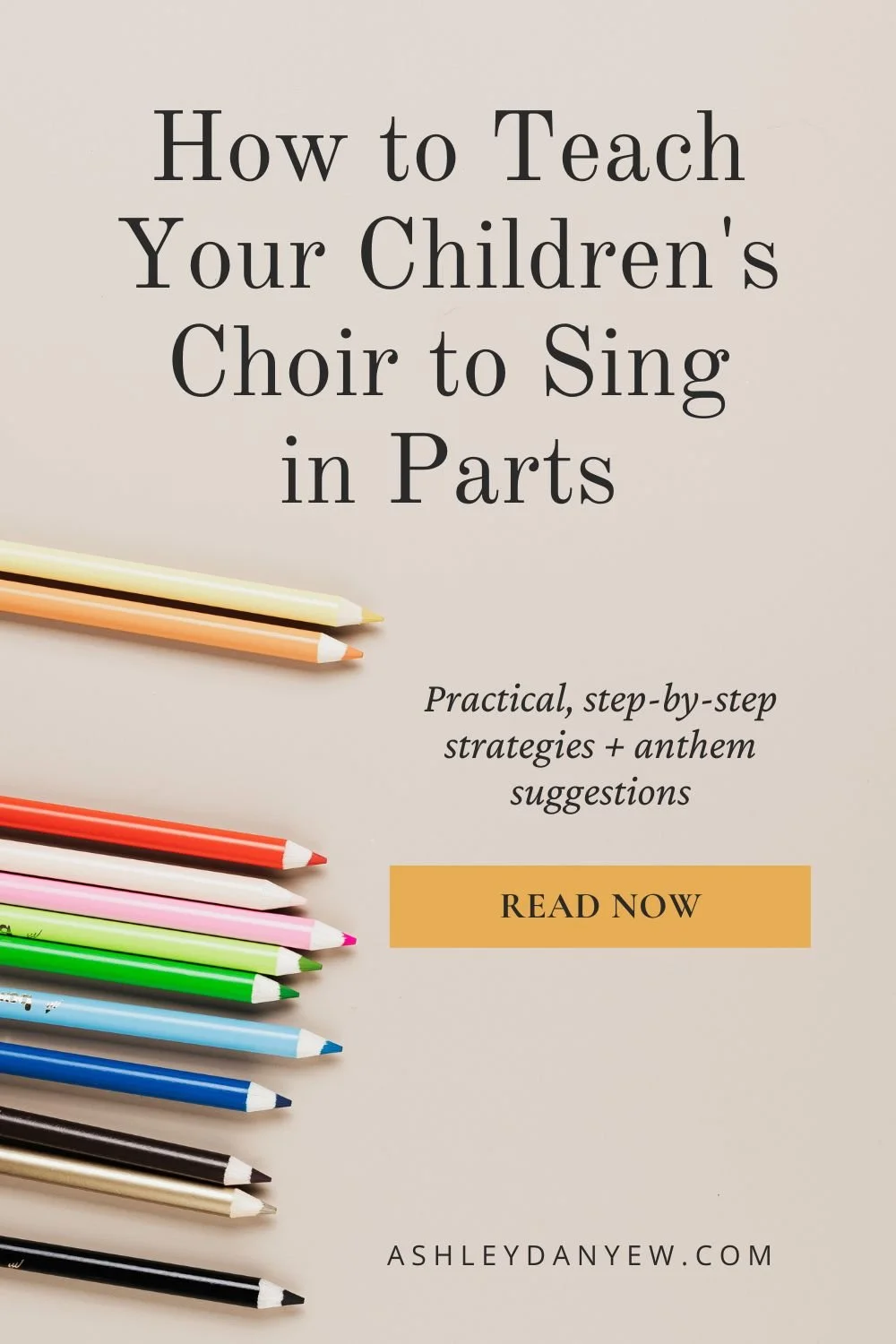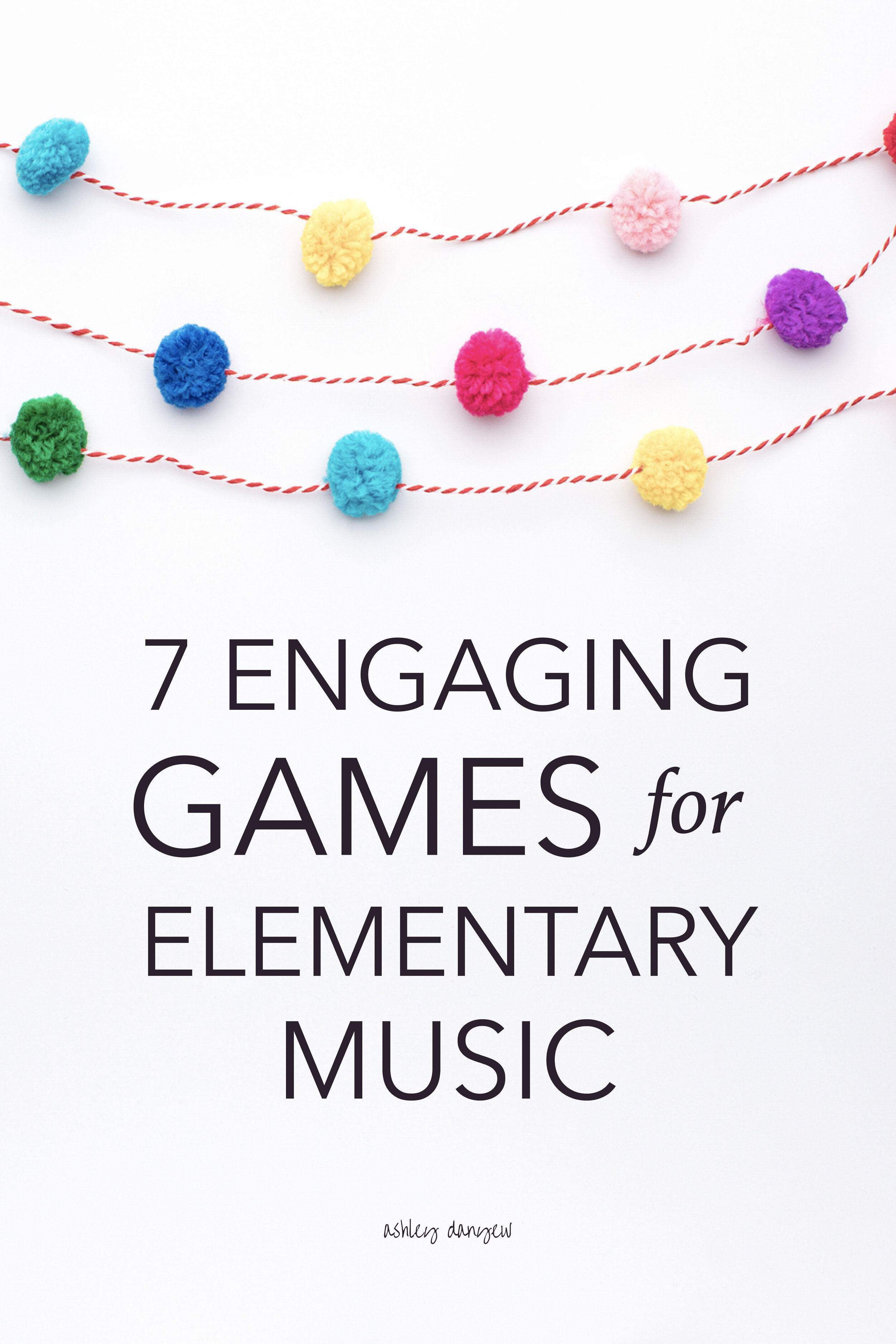For some people, the word “curriculum” may denote academic rigor, standardized tests, detailed lesson plans, and lack of freedom and flexibility. Do you really need this level of planning and detail for your choir?
To a certain extent, yes. Here’s why:
Curriculum can be defined a few different ways. My favorite definition is that curriculum is “the totality of student experiences that occur in the educational process” (Kelly, 2009).
Think of curriculum as a guide: a plan to help you do your best teaching and help promote meaningful learning experiences.
As I tell my students in Directing a Church Children's Choir 101, a curriculum is your basic framework for all the teaching and learning you hope will take place in your choir this year.
As a children’s choir director or leader, you wear many hats. You’re a mentor, a guide, a teacher, and a music educator. It’s important to be just as intentional with the overall plans and goals for your choir year as you are with your week-to-week interactions with your choir members.
Having a big-picture plan for what you want your year to look like (before you get started) and what you hope the children in your choir will experience and understand is vital to fostering spiritual growth, developing musicianship, and growing and building a strong choir program.
Today, you’ll learn how to create your own children’s choir curriculum, customized for your ensemble. This is the same process I use with my Directing a Church Children’s Choir 101 students, so grab a notebook and a pencil and let's get started!
Core Components of a Curriculum
Writing your own curriculum doesn’t have to be as complex or involved as a curriculum in a school might be, but there’s still a basic framework to follow and a few necessary components that will help set you up for success as an educator and ensure a rich learning experience for all involved.
The National Association for Music Education (NAfME) outlines four core components for music education (source):
Creating
- generate, choose, and develop musical ideas
- evaluate, refine, and share musical creations
Performing
- select and analyze music
- make musical decisions
- rehearse, evaluate, and refine
- present music with appropriate interpretation and musical accuracy
Responding
- select and analyze music
- develop an understanding of structure and context
- demonstrate awareness of expressive qualities
- discuss and compare personal preferences
Connecting
- connect personal interests, experiences, ideas, and knowledge to creating, performing, and responding
- draw connections between music of different styles and make connections to everyday life
Creating, performing, responding, connecting—these are all things you can do with your choir, right? With these things in mind, let’s get to work crafting your curriculum:
Step 1: Choose a Theme
I like to start with an overarching theme. Use this as a guide for your planning, choosing repertoire, teaching hymns, and tying everything together in a cohesive way.
Here are a few ideas:
Around the World (music, activities, and prayers)
Images of God (Shepherd, Father, Emmanuel, King, etc.)
Ways to Praise (move, sing, play, dance, pray, etc.)
Celebrating the Church Year (liturgical seasons)
Make sure your theme for the year is broad enough to be broken down into 6-8 sub-themes—topics you can focus on for a few weeks at a time (like unit studies) throughout the choir year.
Sometimes, I find it helpful to make a list of keywords that relate to my overall topic (this is particularly useful for the next step below).
Step 2: Find Music & Resources
Once you have a theme in place, begin pulling together songs, hymns, anthems, and other resources that tie in or connect somehow. Look through your church’s music library, your hymnal (and hymnals of other denominations, too), and your most recent reading packets.
Search by keyword on Google or sites like J.W. Pepper or Sheet Music Plus for new music, devotional resources, and related Scripture verses.
Don’t worry too much about order or sequencing just yet; that will come later. However, as you pull resources together, start grouping them together into smaller sub-groups. These may end up being monthly themes or slightly larger topics that you focus on for 6-ish weeks at a time.
Step 3: Look for Ways to Foster Spiritual Growth and Develop Musicianship
With a list of music, devotional ideas, and other helpful resources, dig a little deeper and start making lists of musical skills and concepts.
For example, when studying a new anthem, look for things that may be challenging—like singing in two or more parts, large leaps, not a lot of repetition, lots of text, etc.—and then think about the necessary steps it will take to get to a place where that kind of music is attainable.
Ask yourself:
What is age/level-appropriate for this group of singers?
How can those new concepts be prepared in advance?
What do children need to be able to do successfully before they will be ready for this next level of challenge?
Look for ways to foster spiritual growth—Bible stories we can learn, Scripture verses you can read and memorize, anthem texts you can talk about, devotions you can share.
I recommend starting the year with music that is accessible and reviews key skills and concepts that you introduced at the end of last year. After a month, or so, begin introducing music that features a new skill or concept and find other songs, hymns, warm-ups, etc. that reinforce it.
Save the more challenging repertoire for after Christmas, during the Winter/Spring months, and make sure to spend time at the end of the year, recapping and reviewing everything you’ve learned during the year.
If you need a little help or guidance with this step, here are a few helpful lists and charts worth checking out. Each one outlines what’s appropriate to teach when and gives you a better idea of how to sequence new skills and concepts in a meaningful way:
Step 4: Pull it All Together
Once you have some sub-themes figured out and a better idea of level and sequencing of the music you’ve chosen, put the sub-themes (and all related music, Scripture verses, and other resources therein) in a logical progression, starting with the most accessible content at the beginning of the year and building up to the end of the year (or close to it—the last few weeks of the choir year are often a good time for review and/or preparing for Children’s Sunday).
With more of the building blocks in place, go back to that list of core components recommended by NAfME (creating, performing, responding, connecting) and think about ways to incorporate and touch on all these things during the year. Spend some time brainstorming ways to include opportunities for creative musicianship; interacting with music, listening, and responding to it; and ways to help young singers recognize patterns and connections across the different pieces of music they’re learning.
Jot down these ideas as they tie in with various songs, hymns, or other resources you’ve pulled together so you have everything in one place when you start outlining weekly rehearsal plans.
Step 5: Plan Weekly Rehearsals
My go-to template for children’s choir rehearsals is pretty straight-forward: I always recommend starting with a few warm-ups, followed by a gathering song or hymn that stays the same for several weeks at a time, reading a Scripture verse the children are learning, and saying a short prayer.
From there, there’s some room for creativity and flexibility. I recommend trying to get through 2-3 anthems and maybe a few other short songs or hymns with a few fun musical games or change-of-pace activities thrown in to keep everyone engaged and participating.
Depending on the age of your choir, you may want to include a few quiet minutes for a devotion or a faith-based conversation about the text of an anthem you’re introducing.
Related post: How to Create a Children’s Choir Rehearsal Plan (+ a free template!)
Plan your choir year and learn how to lead and teach with confidence.
Join me in Directing a Church Children’s Choir 101,
a 4-week online training program geared specifically toward children’s choir directors in church settings.
I’d love to hear from you:
Have you ever written your own children's choir curriculum? What was your process like?
Source:
Kelly, V. (2009). The curriculum: Theory and practice. London: Sage.







































